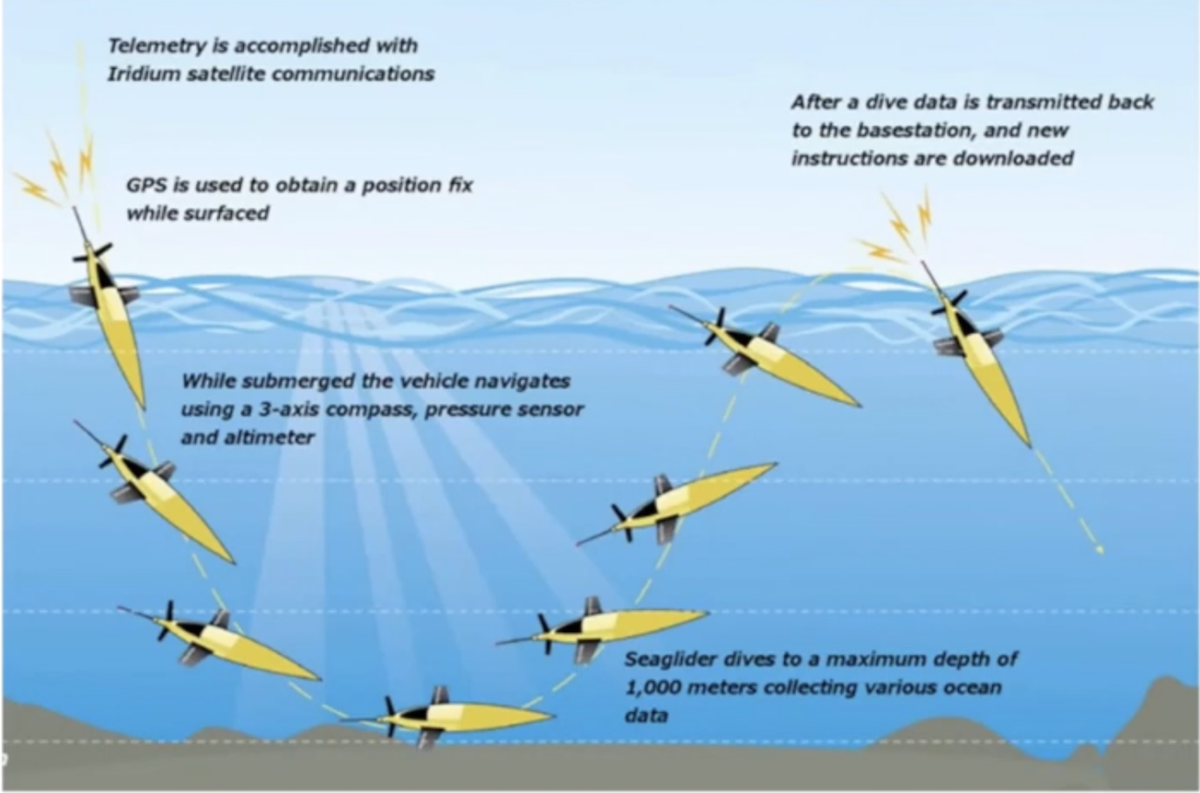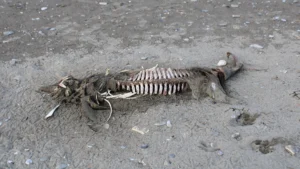National Oceanic and Atmospheric Administration is developing new research technology to better understand the changing ecosystems of the Arctic. It plans to debut one such piece of technology, the Oculus Coastal Glider, summer 2022 to study the Bering Sea.
The Oculus glider is a small, unmanned robot that operates underwater. It is cheaper, lighter, easier to deploy and more agile than its predecessors. It can collect new data, in real-time, such as the water’s nitrate content. In addition, the gliders were designed to operate in shallower waters, like the Arctic shelf, and to carry a heavier payload and more sensors. Currently, NOAA possesses four Oculus gliders. Dr. Phyllis Stabeno introduced the gliders to the public at a Strait Science presentation.
“It starts on the surface. It talks to the satellite. It sends back whatever data it has. It dives downwards. As it senses the bottom, it quickly changes direction, comes back to the surface, and then transmits the data again. Usually, it does two or three dives without transmitting data,” Stabeno said.
The gliders have been in the developmental and experimental stages for five to six years. Thanks to funding from the Office of Marine and Aviation Operations, or OMAO, the manager of the NOAA fleet, they are in a position to become operational in a matter of months, and to get to work, examining some of the unusual trends in the Bering Sea.
Focusing especially on sea ice, and how it affects the entire ecosystem’s structure, Stabeno discussed how sea ice extent and thickness have swung from one extreme to another within the past few years, affecting local sea life. Highlighting this winter as a particularly odd one, Stabeno says these unusual trends have raised a lot of questions about the state of the Arctic ecosystem.
“And to begin to answer these questions which are, in part, due to the changing system we are seeing here, is we need data. And we need to expand the database. So these are the time of things that have pushed PMEL (Pacific Marine Environmental Laboratory) to try and develop new instrumentation,” Stabeno said.
To be efficient, Stabeno says they need to find a way to deploy the Gliders without sending one of the NOAA research vessels to sea. Currently, researchers have to deploy the gliders from one of the bigger research vessels in order for them to collect data. Stabeno mentions a way to solve this problem.
“The funding we have is to deploy two gliders this year, each of them for about thirty days … but also part of this plan is to partner with a community and utilize smaller community vessels to deploy … the glider. The glider goes off and does its business, and then (they’ll) help to recover it,” Stabeno said.
Stabeno mentioned that this initial run will take place summer 2022. Eventually, the team intends to deploy the gliders during the spring and fall, and one day even the winter, to get closer to the times when sea ice is present. By 2023, NOAA is hoping to deploy all of its gliders: two in the Northern Bering Sea and two in the Southern Chukchi Sea.
Image at top: How the Oculus Glider collects data. Image courtesy of NOAA. Used with permission (2022).





